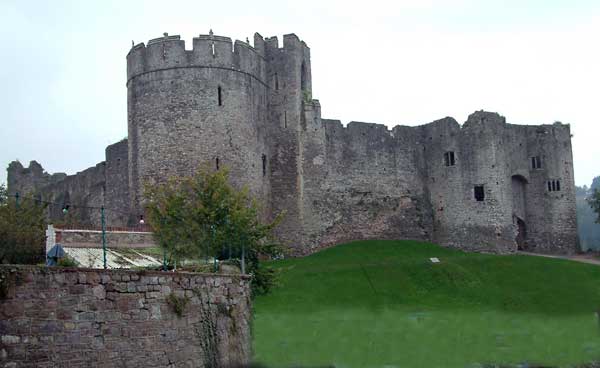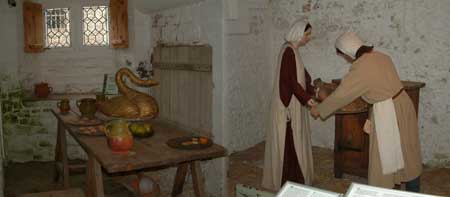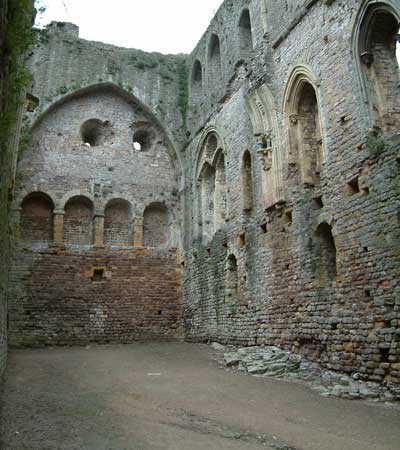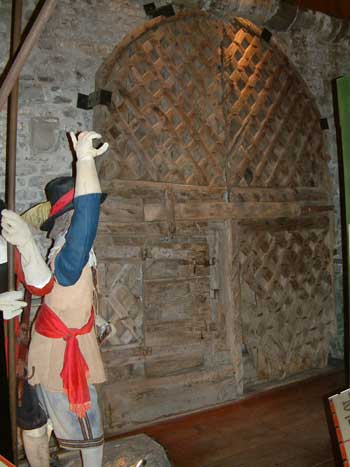| Chepstow castle stands on rock above the swirling waters of the River Wye. Building was started not long after the Battle of Hastings in 1066 by William Fitz Osbern, a companion of William the Conqueror. It was one of the first stone built castles which were replacing the old timber and earth strongholds. The structure was improved through the centuries up to the Civil War, the core being the Norman keep to which towers, walls, gatehouses and barbicans were added in later centuries. Chepstow was adapted for cannons and musketry after a long seige during the Civil War, and continued to be in use up until 1690, and is still beautifully preserved. There is a gift shop in the castle, an Audio and visual display which includes life size figures and a display of the oldest wooden castle door in Europe. Bring a picnic with you and relax in the castle grounds. There are no dogs allowed in the castle. After visiting the castle why not pop across to the Chepstow museum which reveals the rich and varied past of this ancient town, once an important port and market centre. The museum is just across the road from the castle in an elegant 18th century house built by a prosperous Chepstow merchant family. The museum is open 11~1, 2~5pm Mon to Sat/ and 2~5 on Sun. |
 |
| Chepstow Castle |
 |
 |
 |
 |
| Above is a reconstruction of how the "plating up" room would have looked on the visit of King Edward 1 Dec 1285. Meals from the kitchen nearby would be decorated in this room before being taken to the great hall. Below is a typical menu at that occasion. 1st Course Brawn in pepper & spice sauce, Boar's head, Chicken,Heron,Pheasant,Cygnets,Date & prune custard,Sturgeon,Pike. 2nd Course Venison in boiled wheat 7 milk, Jelly, Stuffed sucking pig, Peacock, glazed Chicken,Crane, Rabbits, Fruit tart, cold brawn, date pudding, decorations. 3rd Course Beef in wine and almond sauce,Quinces, Roast Egret, Curlew, Pine nuts in honey & ginger, Quail, Snipe, small birds, Rissoles glazed with egg yolk, |
 |
| Until 1962 these doors hung in the main gateway, then copied and replaced by the present doors. The doors are no later than the 1190s, making them the oldest castle doors in Europe . |